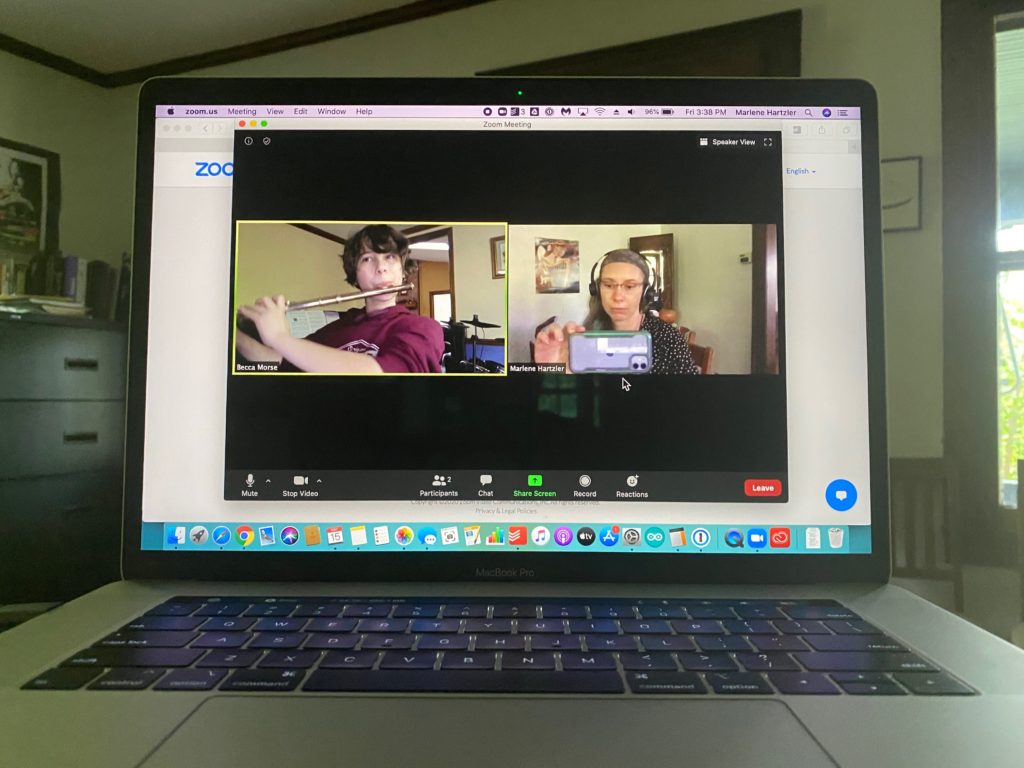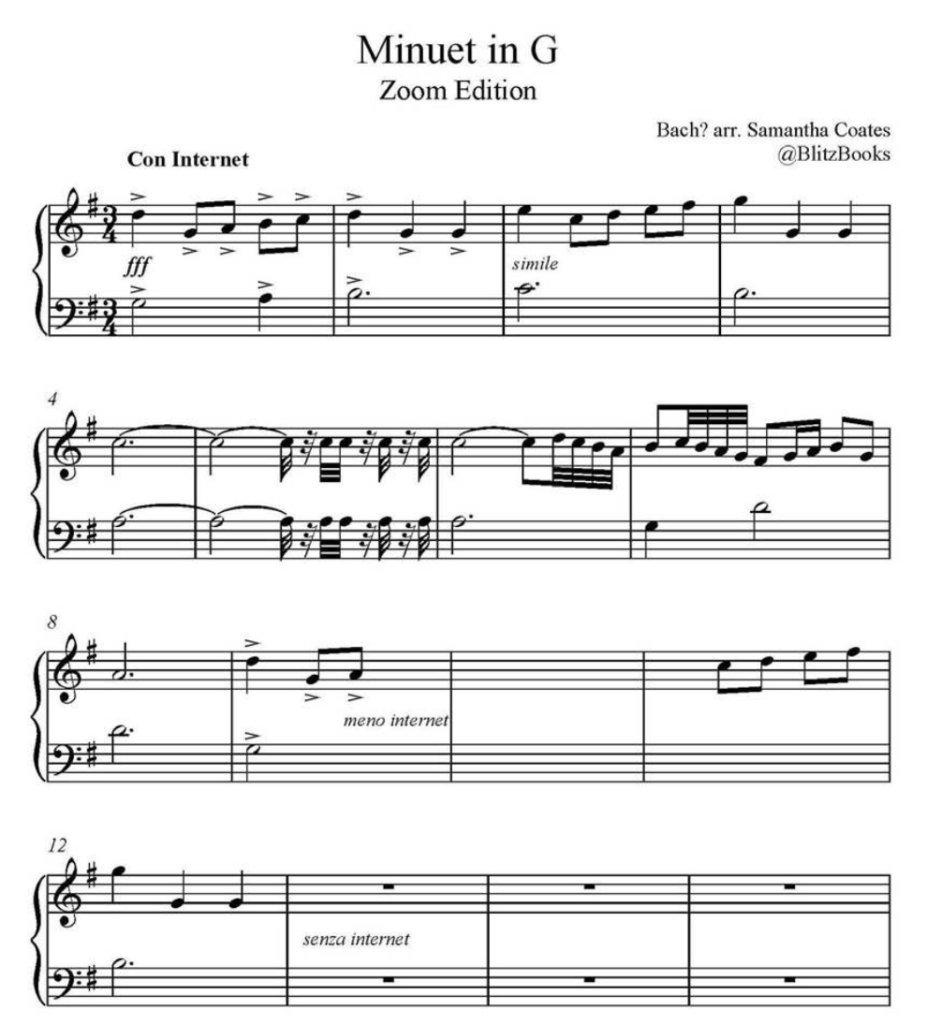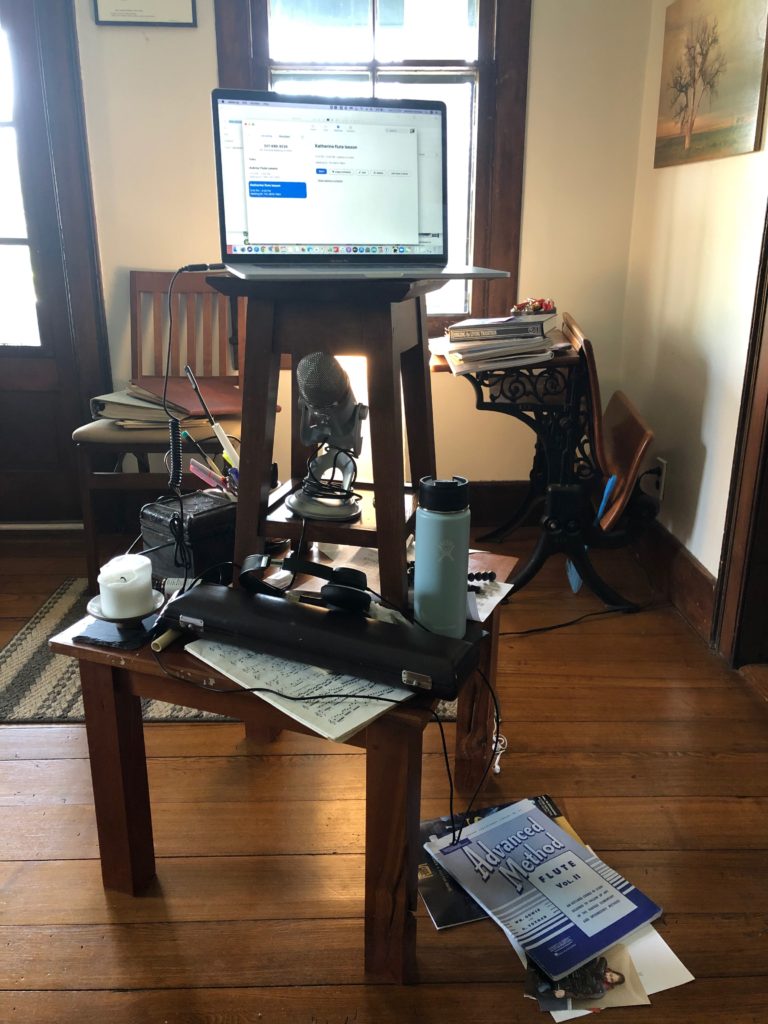Virtual Music: Teaching Lessons Online: The Difficult
In my previous blog post, I talked about the positive things that have happened to my studio now that I am teaching online lessons. The global coronavirus pandemic caused rapid change for everyone. Musicians were especially impacted.
My studio transitioned to online lessons quickly. While there are many things I like about teaching online (see previous blog article), there are other things that are difficult in a remote learning environment.

Rhythmic Precision
It is difficult to correct rhythmic problems when teaching online. There are many roadblocks that are caused by the technology including:
- The video will skip and buffer without notice. Then I am left to wonder “did the student rush really badly or was it the internet connection?”
- I cannot count at the same time the student is playing or play with them because of the lag.
- Marking the music is difficult because I have to tell the students what to write instead of leaning over and marking their music for them.
- My usual bag of tricks – using percussion instruments, tapping the student gently on the shoulder, marching around the room, building rhythm blocks with Legos – can’t be used in virtual lessons.
- When students rush or slow down the tempo, there is no way for me to gently move them in the right direction, by tapping or counting, because we will always be out of sync on the video.

Limits of Technology
Online lessons assume that both the teacher and the student have access to reliable high-speed internet and either a tablet or computer (desktop or laptop). For my student with the slowest connection, we are using the Facetime Video, which seems to use lower bandwidth than Zoom. However, it is still unstable.
A couple of weeks ago, our internet went completely offline just as I was getting ready to teach lessons for the day. I had to cancel everything. The next 24 hours were a blur of self-diagnosing the problem, resetting the modem dozens of times, spending time on hold with the internet provider, driving into Columbus to get a new modem/router, setting up the new device, and resetting passwords on all the devices. After all of this, we realized that the cable cord leading out of the wall was loose.
Normally, my lessons are low tech. We don’t need the internet at all for in-person lessons. We even have lessons when the power is out. Now, lessons depend on a network of devices, all functioning properly.

Limited View
Although there are some things that I like about the video interface, it can also be frustrating at times.
I have one student who is a camera shy. He usually positions the camera so that I can barely see him. If I ask to see his hands, he will show me and then carefully position himself out of the frame.
During in-person lessons, I can see the whole student, changing my position to get a better view. But during online lessons, I am at the mercy of the camera operator, my students. No matter how close I get to the screen, I can’t get any closer to them.
The camera has fallen on the floor more times than I can count, leaving me staring at the ceiling. Last week, I fell into a cat carrier and had the unique view of looking up at my student as she carefully plucked me out of the cage.

Tone
Microphones are pretty bad at picking up the sound of the flute. I can tell when a student has a focused or centered sound, but I cannot assess much more. It is difficult to work on tone color during online lessons. We can work on plenty of things around tone – breathing, embouchure, flexibility – but there’s no substitute for hearing the sound in person.
High notes can be especially painful. I usually wear headphones when I teach the online lessons. However, the high notes can be super loud and feel like an arrow straight through the head. I have to keep my hand on the volume knob when working on high notes with the students. Forget about listening to tone quality. These notes are always shrill because of the microphones and speakers!
Perhaps other teachers are more creative than me, but I have only been able to do a few things with intonation during online lessons. It’s hard for students to match pitch or tune intervals because of the strange feedback we get from the audio.
Ensembles
More than anything, I miss playing duets with my students. When we play duets together, we work on style, intonation, and phrasing in a different way. I can guide a student without using words. They must listen differently, not just to themselves, and they must be reactive to what I’m doing. We simply cannot have that experience during online lessons.
We have tried using apps like Acapella to sync duets. While this is fun and has its own lessons to teach us, it is different. I encourage my students to record themselves playing one part and then play with the recording on the other part. Again, this has some value, but it doesn’t teach the same skills.
We’re In This Together
I’m not the only music teacher struggling with teaching online lessons. Folks have been generous with their ideas online. Here are some resources:
- https://www.ashleydanyew.com/posts/creative-ideas-for-teaching-music-online
- https://nafme.org/music-teacher-resources-school-closures/
- https://themusicalrose.com/teaching-music-virtually/
What are the best and worst parts of teaching music lessons online? Add your comments below.

3 comments